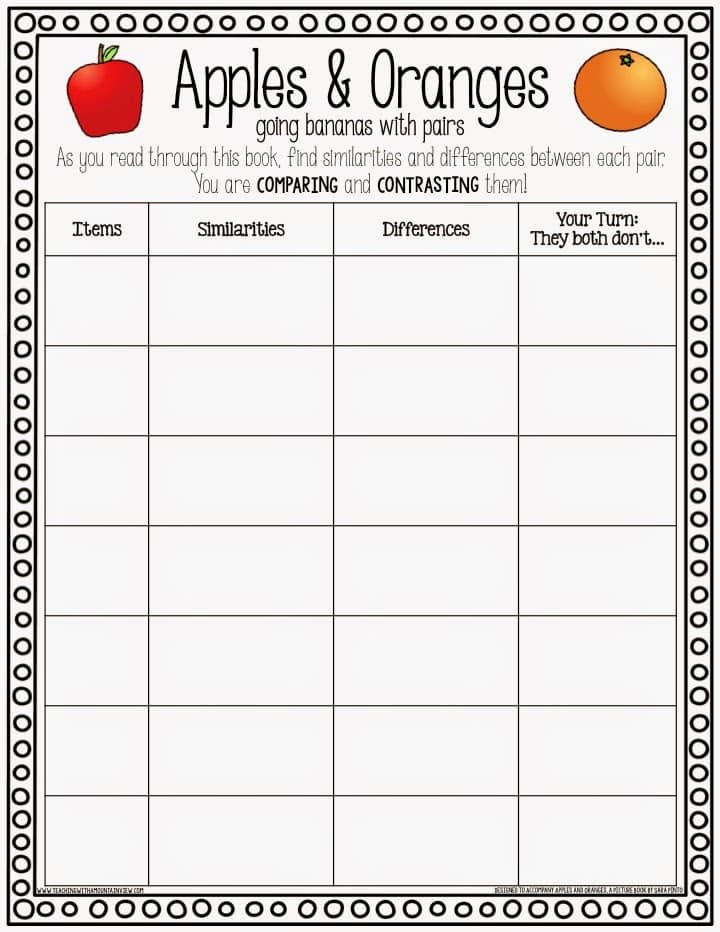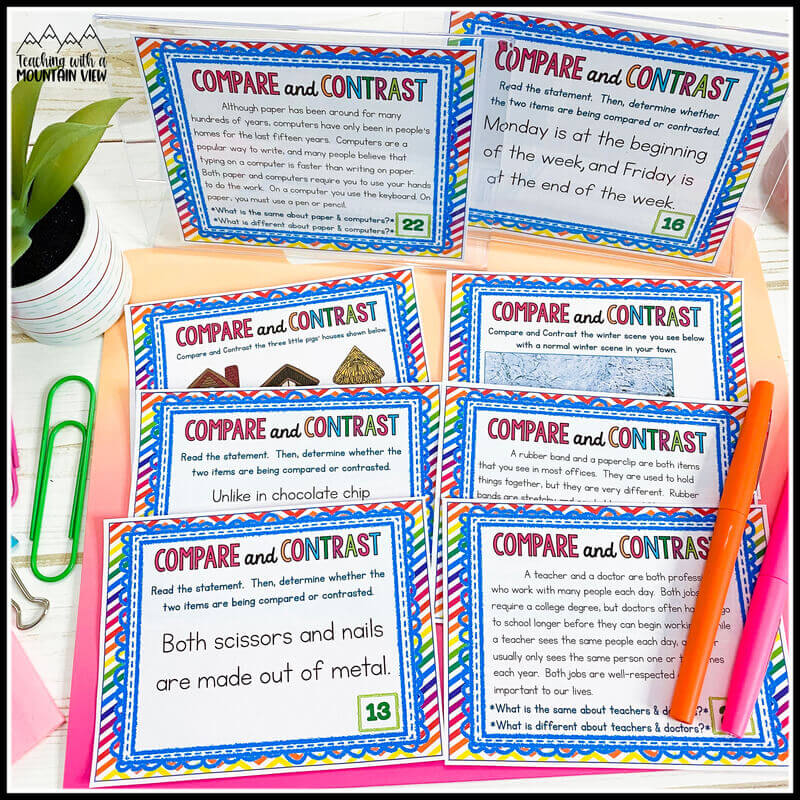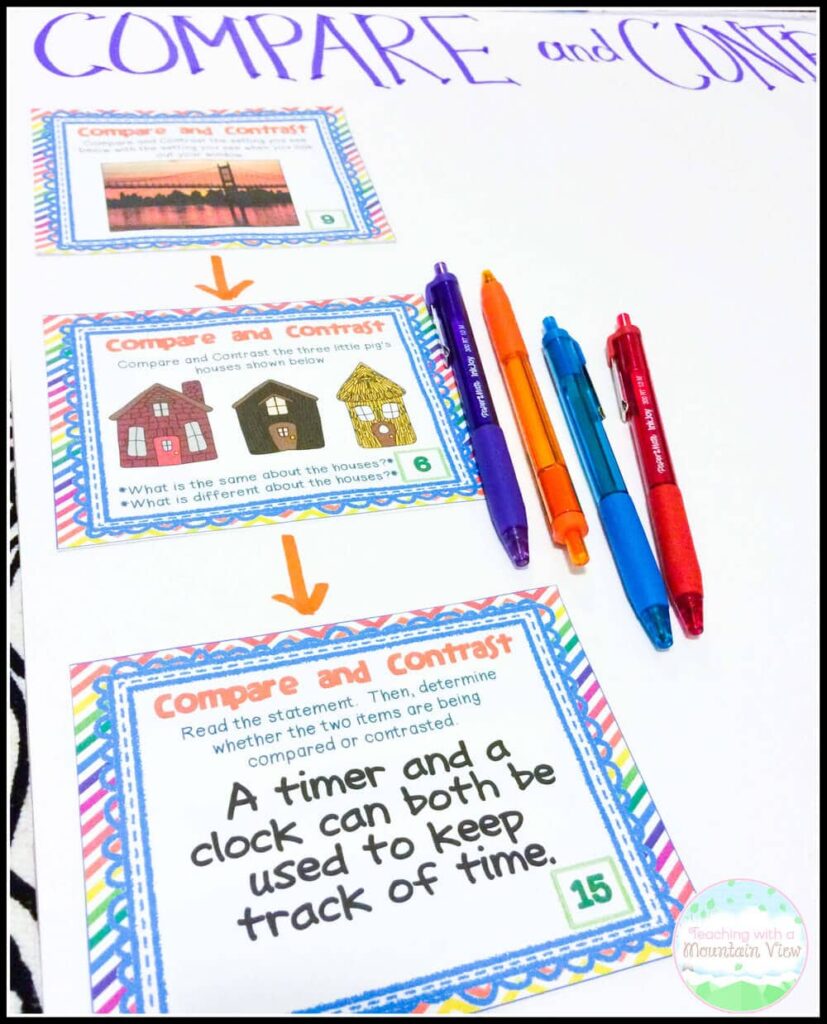Teaching Compare & Contrast
By Mary Montero
Share This Post:
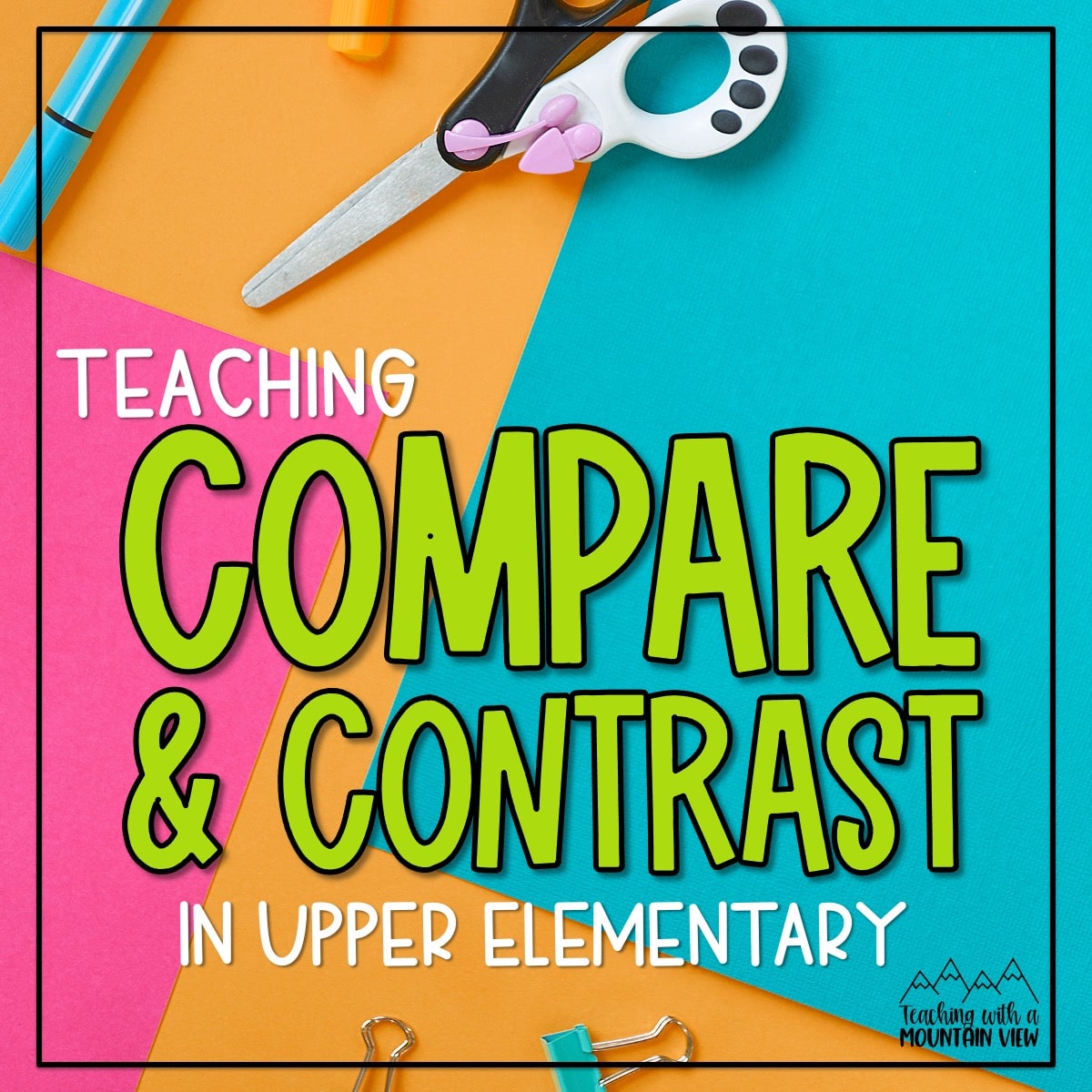
A few weeks ago, my two year olds and I were perusing the shelves of the library when they stumbled upon a book that they wanted to read “because there is an apple and an orange, and I like fruit!” I flipped through it and threw in into our pile. Little did I know I would be reading that book every. single. night. for the next three weeks. Luckily, the book itself is quite hilarious, with an imaginative premise and delightful artwork. I fell in love with the author Sara Pinto. The book, Apples and Oranges: Going Bananas with Pairs, has children consider how two things are alike… and on the next page has a clever similarity so absurd you would never imagine think it up on your own! (Take for example… Apples and Oranges both don’t wear glasses!)
With every passing night that I read this to my toddlers, I knew I wanted to use it in a teaching compare and contrast lesson with big kids. This book is sure to please even the older crowd because of its antics, and I just LOVE incorporating picture books into lessons.
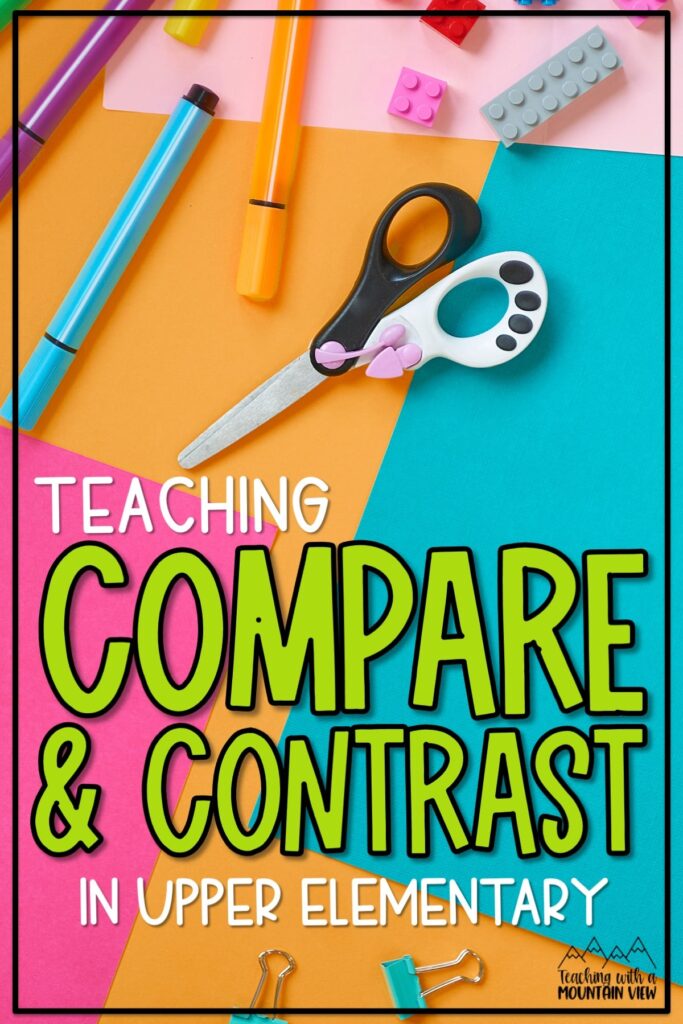
Teaching Compare and Contrast Anchor Chart
The book would be perfect for an introduction to the concept of comparing and contrasting using similarities and differences. Even though it only asks for how the two items are alike, you can challenge students to think of differences too before you turn the page and get to the funny similarity.
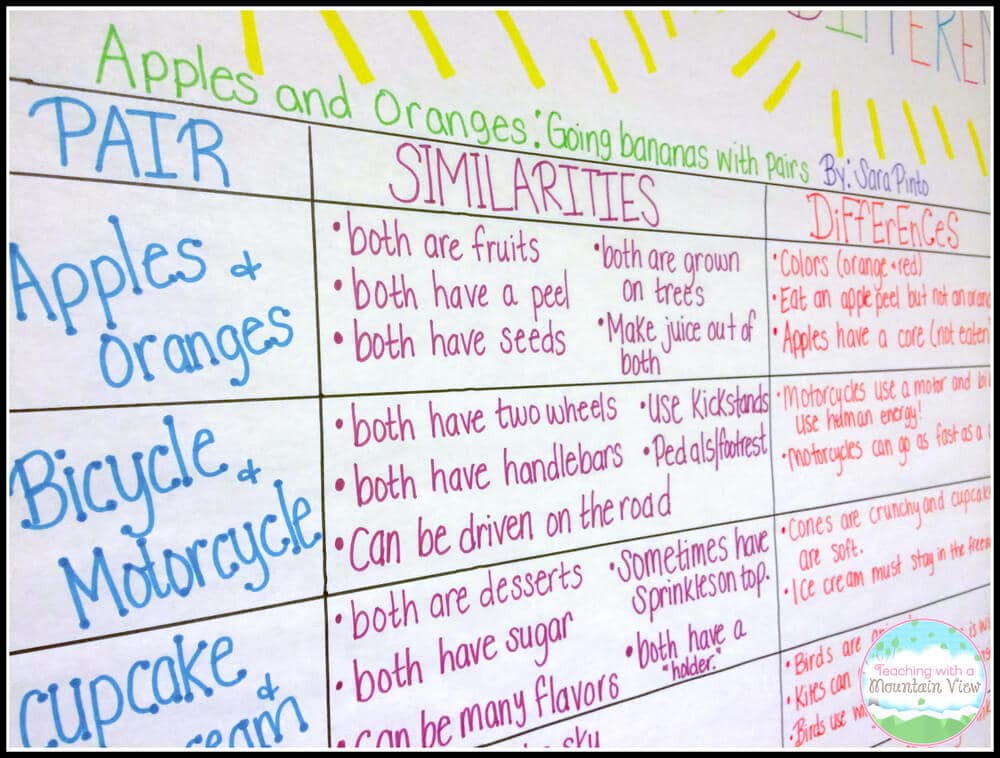
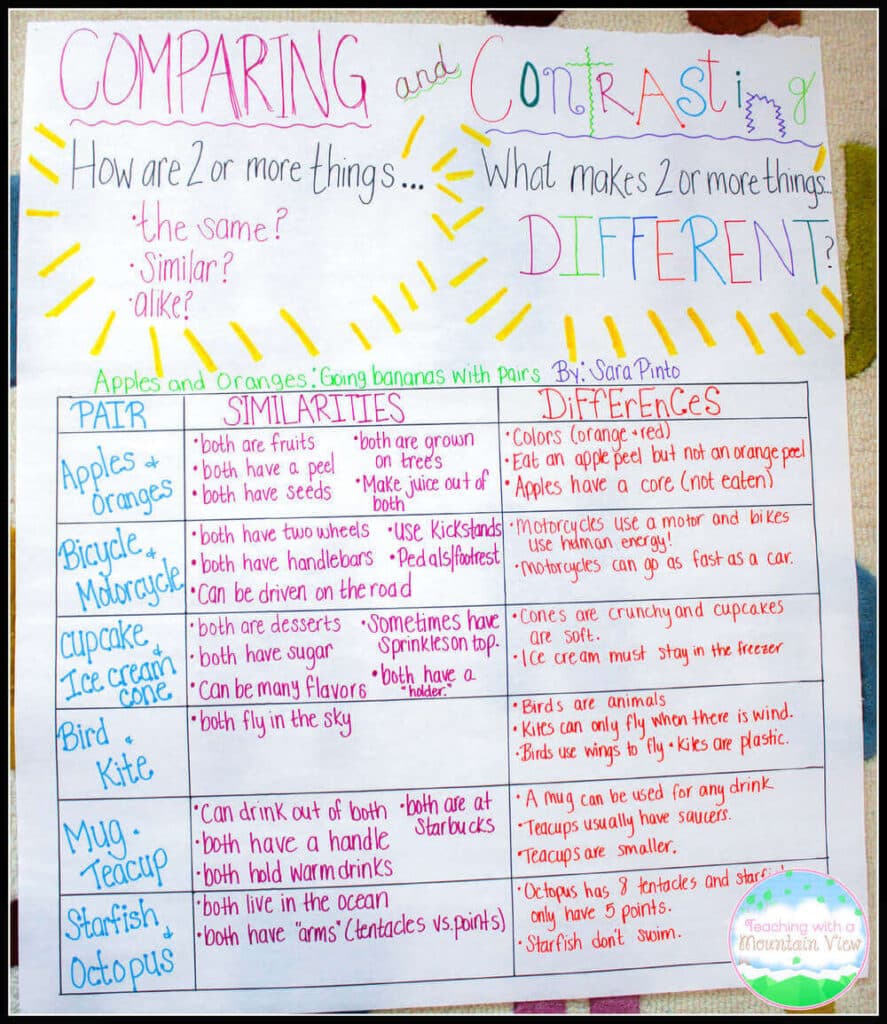
Free Compare and Contrast Extension
After going through the first six pages together, I made a worksheet for the students to finish out the book with less guidance. Continue reading the book, but before you reveal the funny similarity, have students brainstorm similarities and differences on their own or in their small groups. Since they know to expect that funny on the next page, there is a spot on the sheet for them to come up when their own “they both don’t…”
You can download the accompanying sheet for FREE by clicking HERE.
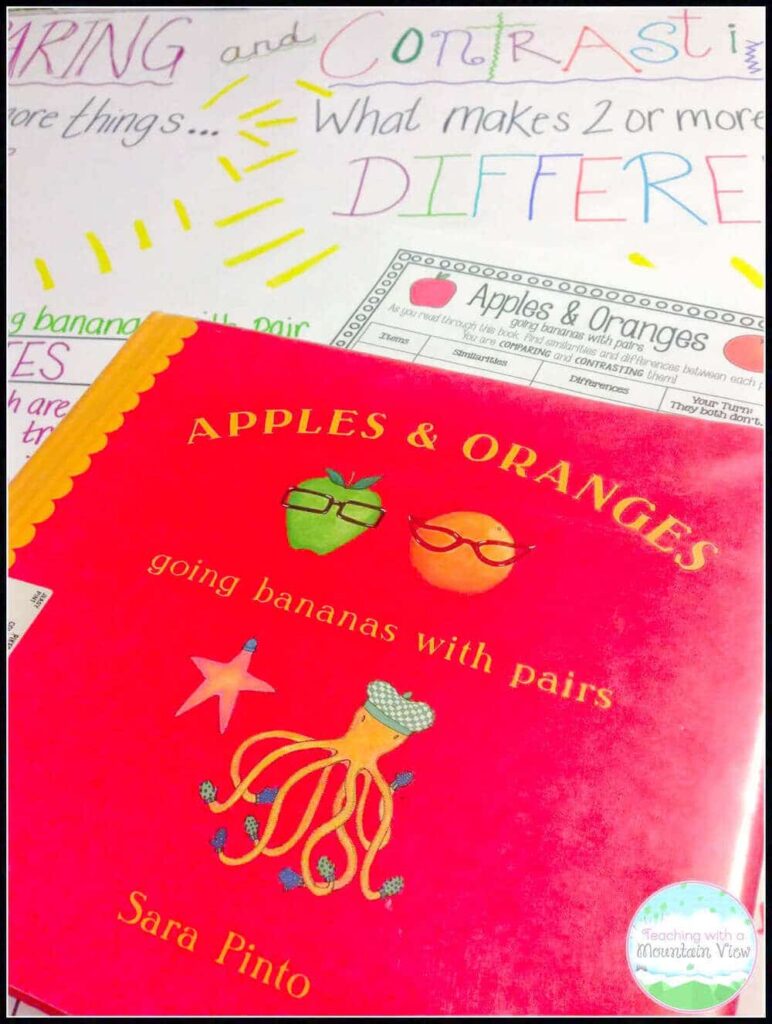
Compare and Contrast Notebook Entries
After the book, consider doing a journal entry with students in their reading notebooks! Here is an example of mine. The pool and beach comparisons would lend themselves well to learning to write a compare and contrast paragraph as well.
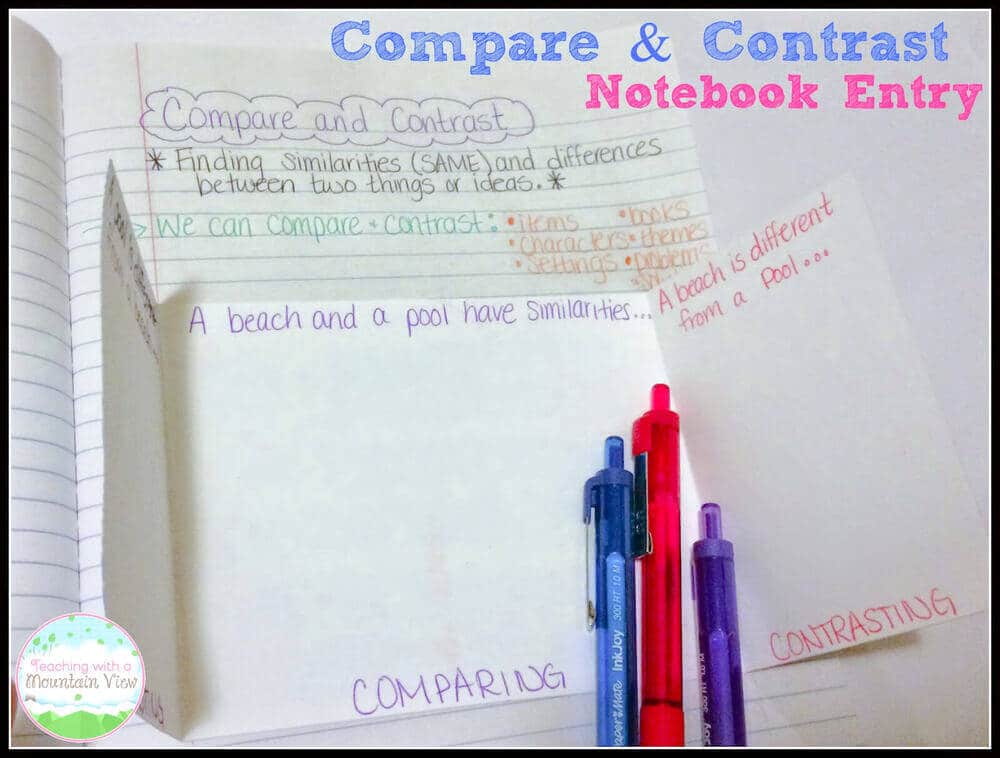
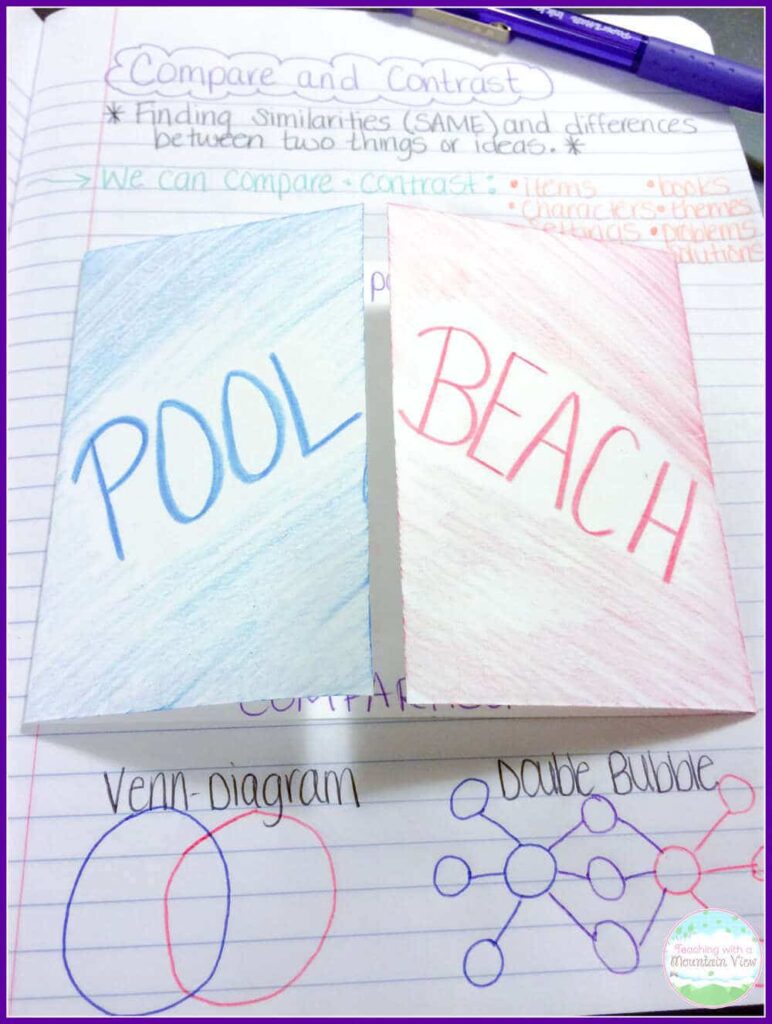
Compare and Contrast Task Cards
Finally, differentiated task cards are a perfect way to transition into comparing and contrasting from longer reading passages. These differentiated compare and contrast task cards are available in my Teachers Pay Teachers store.
There are five different types of cards in this set that progress from easiest to more difficult. They start having students compare pictures based solely on the qualities of the picture. Then, they look at a picture and compare it to something they know in their life. You can see in the picture below that there is a picture of the Golden Gate Bridge. Students make a list of how it is the same and different as what they see out their window right now.
The third type of card has students decide whether something is being compared or contrasted–is the writer noting a similarity or a difference?
The fourth card has students list similarities and differences between two things or items (a pencil and a marker) before finally reading a short passage and answering questions on the last type of card. This is a great way to differentiate or scaffold student learning!
Here is a picture of the set up before students work on it. Each group (there are enough cards for 4 or 5 groups to all have different cards if you want them to) progresses through the 5 task cards on chart paper. You could have them walk around and read each other’s when they are done, too.

Next Steps
Of course this is just the tip of the ice berg of teaching this skill. Your next step is comparing and contrasting two books, including the settings, characters, ideas, changes, etc. This post can help.
What ideas do you have for teaching students to compare and contrast? Any favorite books? Please share them with us in our FREE Inspired in Upper Elementary Facebook group.
Mary Montero
I’m so glad you are here. I’m a current gifted and talented teacher in a small town in Colorado, and I’ve been in education since 2009. My passion (other than my family and cookies) is for making teachers’ lives easier and classrooms more engaging.







